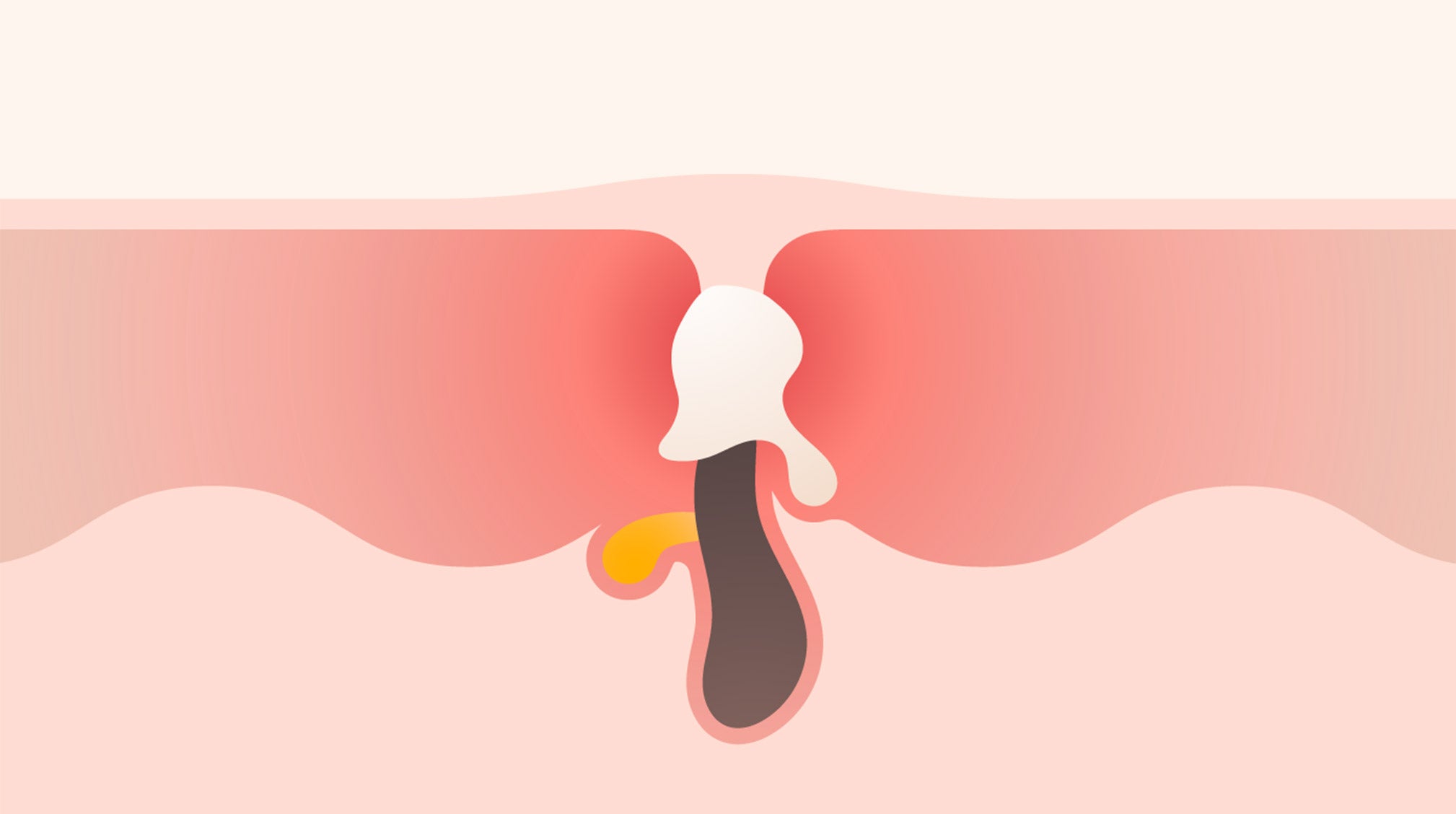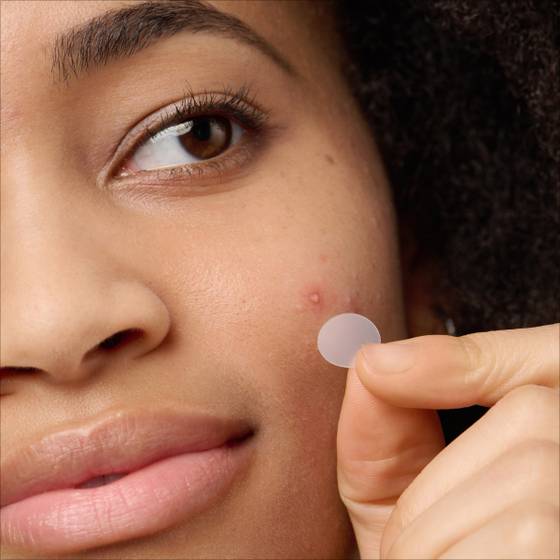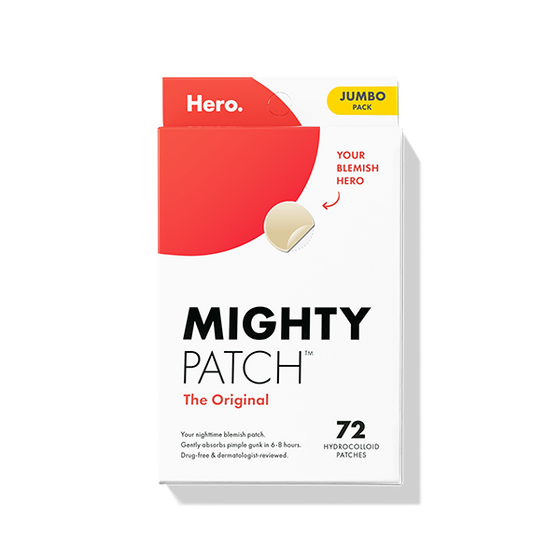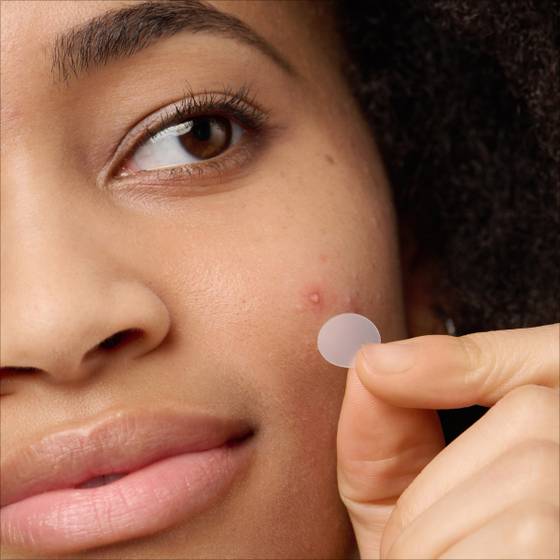
Why am I breaking out? Almost all of us have looked in the mirror and pondered that question at one point or another. After all, acne is the most common skin condition in the United States, according to the American Academy of Dermatology.
In case you’ve ever wondered exactly how a pimple comes into existence, we are going to satisfy your curiosity. Read on for a deep dive into the dermis to find out how and why pimples form, check out a diagram of a pimple, and most importantly, learn the best ways to stop a pimple in its tracks.

How do pimples form?
Let’s start at the bottom. The bottom of a hair follicle, that is. Our outermost layer of skin is called the epidermis. It’s basically our skin’s waterproof barrier and the layer that creates skin tone. Just below the epidermis is the dermis, and that’s where our hair follicles begin. “Pimples, or acne, form in the middle layer of the skin, called the dermis,” says Dr. Sharleen St. Surin-Lord, a board-certified, Washington D.C.-based dermatologist. “The dermis is where the skin’s sebaceous (oil) glands are located. How many sebaceous glands you have and how much oil they produce will determine how dry or how oily your skin is.”
The sebaceous glands are connected to the hair follicle. Each sebaceous gland secretes sebum, a mixture of fats (triglycerides, wax esters, squalene and cholesterol) and cellular debris, which is discharged and pushed up to the skin’s surface through the hair follicle.
Our pores (or the tiny dots you can see on the surface of your skin) are the openings of hair follicles. The primary function of pores is to release sweat and the sebum from our sebaceous glands.
“The formation of a microcomedone in the hair follicle or pore is thought to be the initiating event for acne formation,” explains Dr. Adam Mamelak, an Austin-based, board-certified dermatologist. “Here, sticky skin cells, keratin material and debris gather in the follicle, trapping oil and sebum in the pore.” This trapped sebum and dead skin then combines with Cutibacterium acnes (C. acnes, previously called p.acnes), a bacteria that typically lives harmlessly on our skin. Our body responds to this pore-clogging trio by developing inflammation and a pimple begins to form throughout the hair follicle, in both the dermis and epidermis.
What happens next?
This beginning stage of a pimple often occurs before a zit is even visible. You’re probably all too familiar with the feeling of an early-stage or blind pimple – when you can’t yet see a head, but you can feel a slight, sometimes-painful area of inflammation under the skin.
Most pimples will continue their journey to the surface of the skin, but we often get DMs asking us if there’s a way to stop a pimple before it even reaches that “visible pus” stage?
While topicals cannot penetrate the skin to reach the pus and bacteria building in the dermis layer of the follicle, treatments with physical elements can. That’s why dermatologists often recommend a cortisone shot or a microneedle patch (like Micropoint for Blemishes) to treat pimples without a visible head.
If left alone, the evolution of an early-stage pimple can vary. “If the glands remain open, open comedones or blackheads can form,” explains Mamelak. “If they are blocked, closed comedones (whiteheads), papules, and pustules (pimples/zits) can form. If the acne lesion completely loses its connection with the surface, cysts and nodules can form.”

4 ways to give your zits a zap
The best acne treatments really depend on the type of breakout you are experiencing. Whether you have a whitehead, black pimple, pustule or papule, here are a few derm-recommended tips on how to get rid of pimples, STAT.
1. Hands off!
“Don’t pick or squeeze,” says Dr. Fran Cook-Bolden, a New York-based, board-certified dermatologist. "The goal is to get rid of the inflammation.” Instead, she recommends relieving the initial pain with a warm compress or an ice cube wrapped in a cloth.
If you are a picker (and if we’re all being honest, most of us are), covering a pimple that has a visible whitehead with a hydrocolloid patch can help eliminate touching and further irritation, while healing your acne at the same time. For daytime coverage and treatment, try an ultra-thin patch, like Invisible+.
2. Keep it clean.
While experiencing breakouts, make it a regular habit to wash twice a day and after any particularly sweaty workouts. “You can try different acne washes with benzoyl peroxide or salicylic acid,” says Surin-Lord. “Salicylic acid is a derivative of aspirin and should not be used by those who are allergic to aspirin. Benzoyl peroxide is both antibacterial and comedolytic (breaks up blackheads). This is great news, unless it causes your face to feel tight or it burns or cracks your skin.”
Since benzoyl peroxide can be irritating for sensitive skin, we recommend starting with cleansers that contain salicylic acid, which is gentler and still effectively breaks down the gunk that’s clogging your pores.
3. Target your treatments.
Traditional acne spot treatments often dry out both the pimple and the surrounding skin. Instead, look for brands that take an acne care 2.0 approach to gently healing breakouts for healthier skin in the long term. Hydrocolloid patches use a single active ingredient to absorb pus and oils from a pimple in just hours.
4. Talk to your derm.
“If OTC treatments don't control your breakouts, a dermatologist can help customize a treatment plan based on your skin and acne type,” says Mamelak. “Prescription antibiotics, hormonal therapies, Accutane, chemical peels and laser treatments are all effective in reducing and eliminating acne.”
[[product-ad]]


















